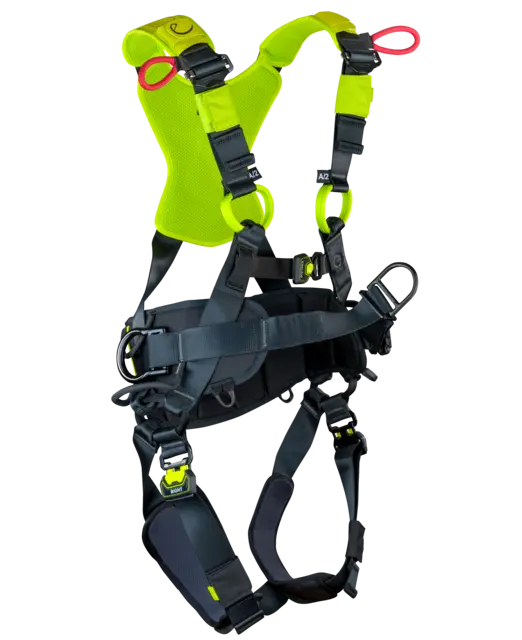Fall arrest harnesses are restraint devices for the body, designed to stop people in free fall. They consist of webbing, fittings, buckles, and other individual parts arranged in such a way that the harness supports the whole body of a person, straightens it up during the arrest, and keeps it in an upright position while hanging. Fall arrest harnesses are manufactured and certified in accordance with EN 361. This standard also allows fall arrest harnesses to be integrated into items of clothing such as high-visibility vests or life jackets.
Special requirements for fall arrest harnesses:The fall arrest harness must ensure that the user is safely caught and suspended. Additionally, the safe functioning of the equipment must be easy to check.





























